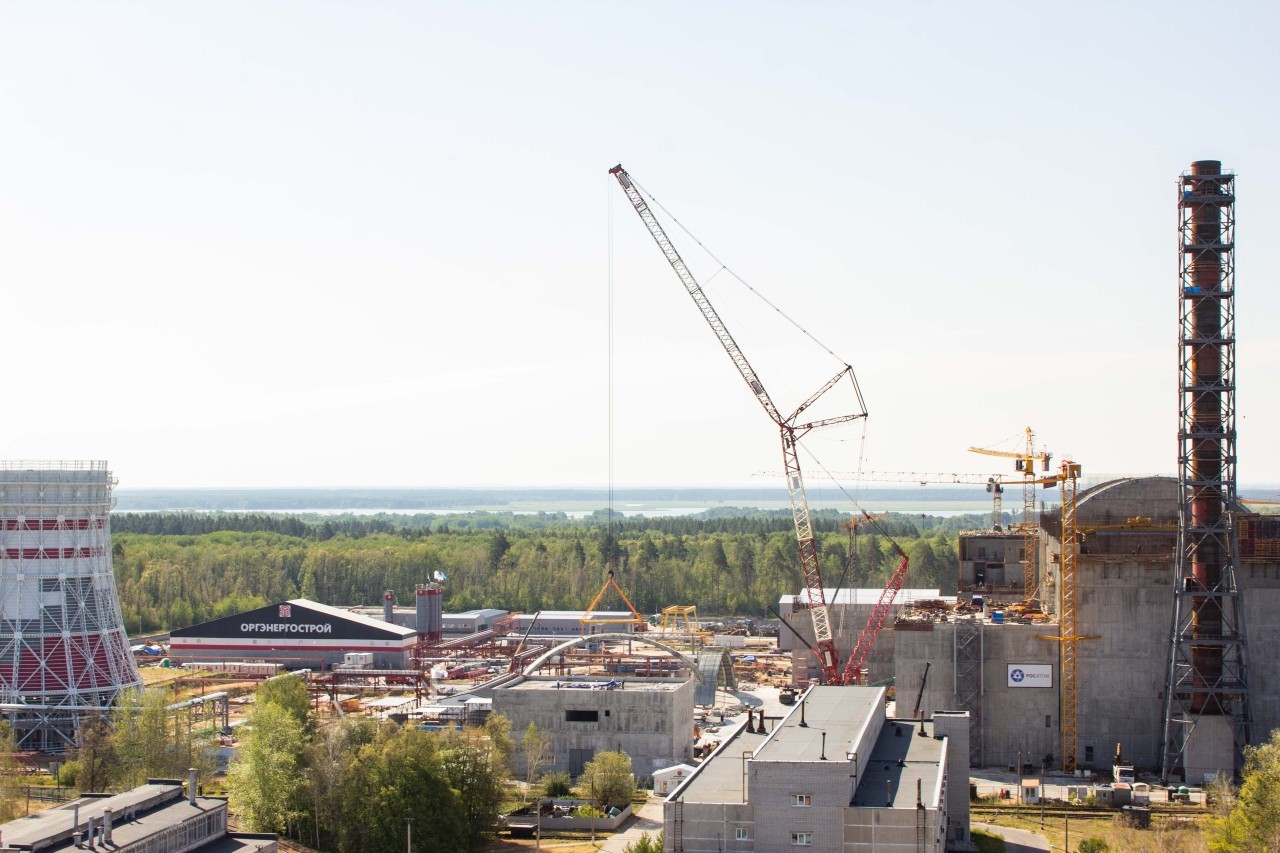 Installation of the building dome has been completed for the multi-purpose fast neutron research reactor MBIR (Mnogotselevoi Bistrii Issledovatelskii Reaktor) under construction at the Scientific Research Institute of Atomic Reactors (NIIAR) in Dimitrovgrad (Ulyanovsk region).
Installation of the building dome has been completed for the multi-purpose fast neutron research reactor MBIR (Mnogotselevoi Bistrii Issledovatelskii Reaktor) under construction at the Scientific Research Institute of Atomic Reactors (NIIAR) in Dimitrovgrad (Ulyanovsk region).
The 150MWt multi-purpose sodium-cooled fast neutron reactor will be the world’s largest facility of its kind. It is expected to provide the nuclear industry with a modern and technologically advanced research infrastructure for the coming 50 years. Its unique technical characteristics will make it possible to solve a wide range of research problems to support the development new competitive and safe NPPs, including fast reactors based on closing the nuclear fuel cycle. Research time needed at the new reactor will be several times less in comparison with the currently operating installations.
Each stage of the installation of the dome was a complex technological operation and required a lot of preparation, including large-scale assembly of structural elements on the ground, followed by slinging and lifting to the required level. Crane operators, slingers, welders and engineers were involved in the work.
The builders installed 22 arches, each weighing 74 tonnes. The length of each arch span is 38 metres. The work was carried out over a period of five months using a heavy crawler crane with a lifting capacity of 750 tonnes.
“The completion of this process indicates the closure of the thermal circuit of the reactor building. This makes it possible to begin installing the main process equipment and performing special, installation and finishing work. All work on the construction of MBIR is on schedule,” explained Gennady Sakharov, Director for Capital Investments, State Construction Supervision & State Expertise at Rosatom.
During the construction of the MBIR, Rosatom’s state of the art technologies and new management approaches are used including integrated remote monitoring tools such as photography from unmanned aerial vehicles and laser scanning. As a result of this and close interaction between scientists and builders, the overall project is ahead of schedule.
Rosatom says the construction of MBIR is the most important project for the long-term development of the experimental base of Russia’s domestic nuclear industry, “which will ensure Russia's leadership in the development of innovative reactor technologies for the next half century”.
MBIR will be the basis of an international research centre (ICC MBIR). It will replace the BOR-60 experimental fast reactor that has been in operation at NIIAR since 1969. BOR-60 is due to close in 2025. MBIR will be used for materials testing for Generation IV fast neutron reactors. It will be capable of testing lead, lead-bismuth and gas coolants and will enable reactor and post-reactor experiments, perfecting technologies for the production of isotopes and modified materials.
The chief designer of the project is the NA Dollezhal Scientific Research & Design Institute of Power Engineering (JSC Nikiet); the scientific supervisor is the AI Leipunsky Institute of Physics & Power Engineering (IPPE); the general designer is GSPI: and the general construction contractor is JSC Orgenergostroy Institute.
“The construction of the MBIR reactor complex is another important step towards providing the domestic nuclear industry with a modern and technologically advanced research infrastructure for several decades to come,” said NIIAR Director Alexander Tuzov. “At MBIR they will conduct experiments not only in the interests of nuclear energy, but also for all other industries that use nuclear technologies - from medicine to space.”
The project is being implemented within the framework of the programme “Development of equipment, technologies & scientific research in the field of nuclear energy use in the Russian Federation for the period up to 2024" (RTTN - Razvitiye Tekniki Teknologii i Nauchnikh). The programme was developed by together with the Kurchatov Institute Research Centre, the Russian Academy of Sciences, and the Ministry of Science & Higher Education. It includes the development of new advanced technologies and materials, samples of new equipment, technical re-equipment, construction of unique complexes and infrastructure facilities in the field of nuclear energy and control of thermonuclear fusion reactions, as well as low-power nuclear plants. In April 2022 , it was extended until 2030.
Image courtesy of Rosatom



